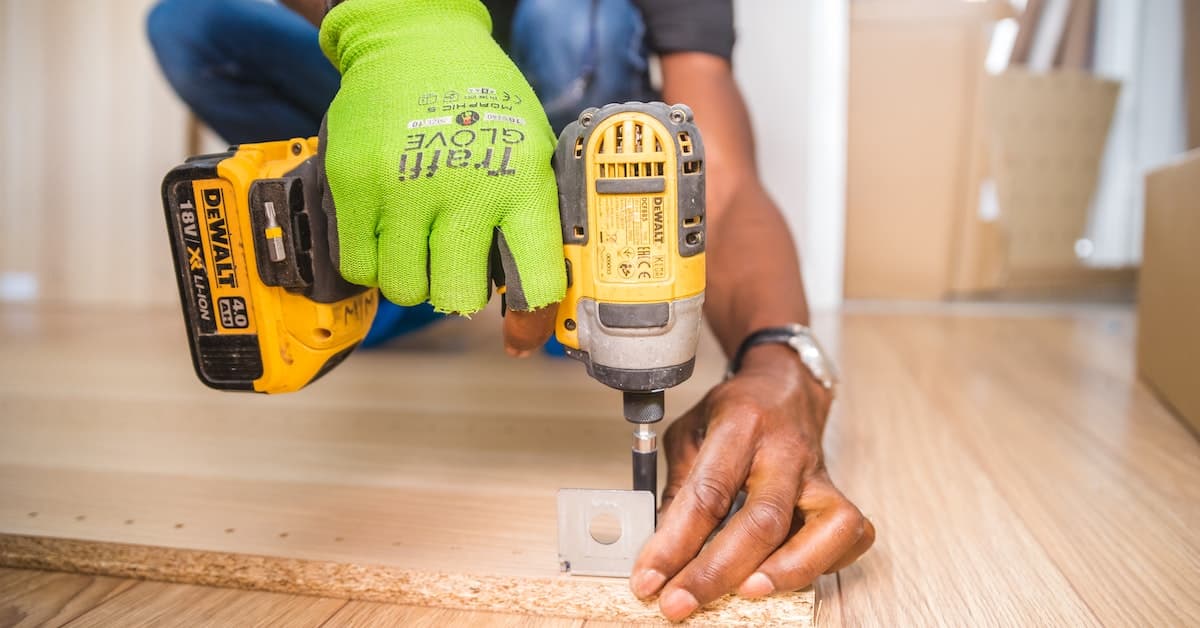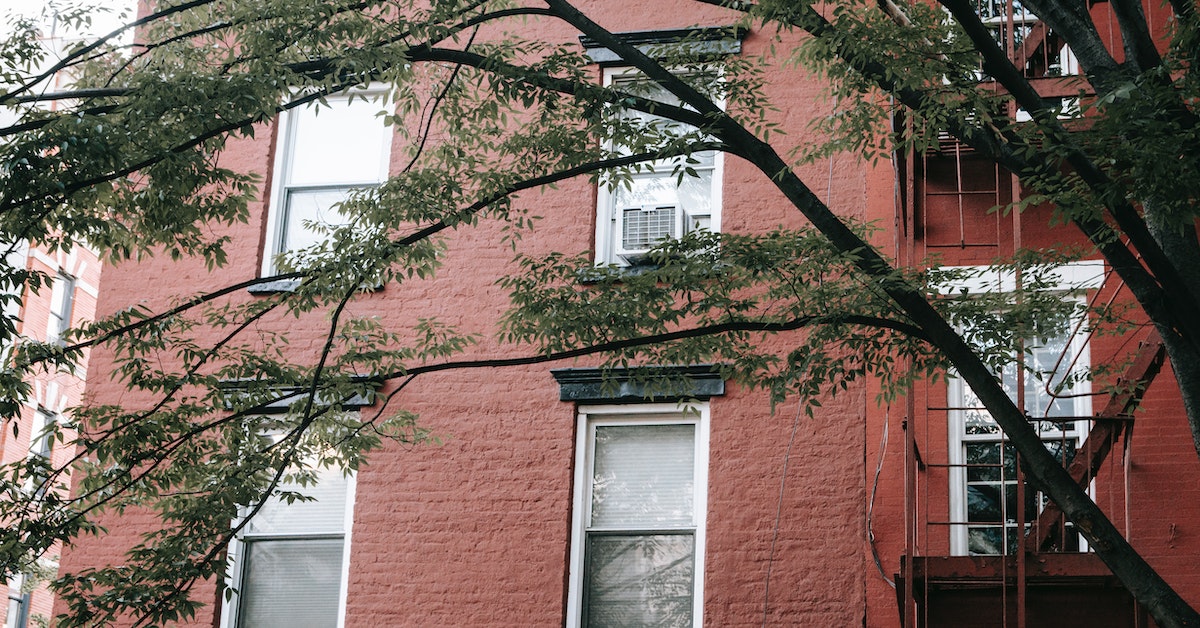
There are many benefits to owning rental property-- giving you a source of passive income, greater financial stability, and diversifying your investment portfolio, just to name a few. Before you can start building your real estate empire, though, you're going to need to learn about your rental property financing options.
How can you get your foot in the door as a real estate investor?
While conventional loans are the first thing to come to mind, there are a lot of other ways to obtain financing for your first rental. Let's take a look at the traditional and more creative financing options available for rental properties.
Just like you can take out a mortgage for your home, you can receive financing for investment properties.
Owning a rental can be a great way to earn some extra income, diversify your investment portfolio, and increase your net worth. However, only investors with the deepest pockets are able to buy rental properties with cash.
Even if they can afford to purchase an investment without the help of a loan, many investors choose to finance the purchase with a mortgage because it allows them to put in as little money upfront as possible and invest the rest of their money in more liquid assets.
Wondering how the heck you're going to find the money to buy your first rental property? Let's take a look at 12 options used by investors.
When you’re considering buying a rental property, the most apparent option for financing your investment is a conventional bank loan.

If you own your primary residence, there’s a good chance you’ve already been through the conventional financing process.
Unlike FHA, VA, and USDA loans, conventional mortgages aren’t backed by the federal government. However, they do conform to the guidelines put in place by Freddie Mac or Fannie Mae.
In order to qualify for a conventional mortgage for a primary residence, the borrower needs to make a 20% down payment or pay for mortgage insurance. The option to pay private mortgage insurance (PMI) rather than put a full 20% down allows many homeowners to purchase their residence without shelling out an arm and a leg for their down payment.
However, PMI doesn’t apply to loans on rental properties or investment properties. This means that you will be required by most conventional lenders to put down at least 20% for the down payment, if not 25% or 30%.
If you want to get a conventional loan for a rental property, you’re going to need to be able to show the lender that you can afford the place on top of your existing responsibilities, so your credit score, credit history, debt-to-income (DTI) ratio, and more will be used to determine whether you qualify and what kind of terms you receive if the lender does choose to loan you the money.
You can also expect the interest rate to be higher for conventional loans used to purchase rental property than those you would use to buy a primary residence. Basically, getting this type of loan is more difficult and more expensive for investment properties than it is for your personal home.
The reason for this is that investment properties are viewed by lenders as riskier than an individual's personal residence. The rationale is that someone who runs into financial difficulties will be more likely to keep up with their primary mortgage, but less likely to prioritize payments on their investments.
Conventional loans meet the requirements published by the Consumer Financial Protection Bureau (CFPB) for qualified mortgages and are therefore sometimes known as conforming loans.
Non-QM loans, on the other hand, don't meet these requirements. Non-QM stands for "non-qualified mortgage."
Conventional loans meet the "ability to repay" rule set forth by the CFPB, while non-QM mortgages don't.
There are some risks to consider when thinking about applying for this type of loan. There might be a combination of risky features incorporated into non-QM loans that you'll want to watch out for, including:
This type of loan is going to be more costly than a conventional loan, both in terms of the interest rate and upfront costs.
While this might sound like a lot of bad news, these loans can be appealing because they offer flexibility when it comes to credit history and income. You might be able to receive financing using only your bank statements rather than W2s, tax returns, and pay stubs. Some lenders will even lend money to people who have recently gone through a foreclosure or bankruptcy.
It's worth noting that these lenders aren't the same as the subprime mortgage lenders of the 2008 housing crisis. Lenders are required to verify that you should be able to repay the loan through a good faith effort. However, they are allowed to build their own guidelines for how they determine a borrower's ability to repay a loan.
Hard money loans are more common for flipping houses than rentals, but it’s possible that this type of loan could be useful in your efforts to finance your investment.

This type of loan is a short-term loan that is easier to qualify for than conventional loans. For this reason, some investors choose to first get a hard money loan in order to buy a property and then they pay the loan off right away with a private money loan, conventional loan, or a home equity loan. That being said, it is often easier to simply start off with one of these loans rather than going through the borrowing process twice if you aren’t planning on flipping your investment.
When identifying whether they should lend money to individuals, hard money lenders tend to focus primarily on the profitability of the property. While they do look at things like your income and your credit, they aren’t as central as they are during the conventional loan process.
If you apply for a hard money loan, the estimated after-repair value (ARV) will be used to determine whether you will be able to reimburse the lender for the loan. One of the great things about hard money loans is that it is possible to receive the funding in days rather than weeks or months when compared to a conventional home loan.
If you’re intrigued by the possibility of getting a hard money loan, you’ll want to understand the costs. The interest rates for this type of loan are often much higher than for conventional loans and other long-term loans. At the same time, the time you have to pay the loan back might be very brief.
In many cases, hard money loans will have terms that last less than a year. This type of loan also might cost more when compared to conventional loans when it comes to both the closing costs and the origination fees.
Private money loans are just what they sound like– loans from one person to another.
An individual might get a private money loan from family members or friends. In fact, this is probably the most common source of private money loans.
Investors that don’t have family or friends that are willing or able to loan money for investment property aren’t entirely out of luck, though. Investors looking for funding in the form of private money loans can attend local real estate investment networking events to find an investor that would be willing to help fund the project. You can find a directory of local real estate investment clubs through the BiggerPockets site.
The rates and terms of private money loans can cover a huge range. You might find that you’re able to find extremely favorable loan terms through this method. On the flip side, the rates and terms of some private money loans might even qualify as predatory.
It’s common for private money loans to be secured by a contract that gives the person loaning you money the right to foreclose on the property if you don’t make the agreed payments.
You will want to be aware of the way that money can complicate relationships before you sign on for a private money loan. It is hard to imagine just how damaging it can be to have a disagreement over money even with your closest friends and family.
Another creative approach to buying a rental property is house hacking. The basic strategy here is to buy a multifamily property with two to four units and reside in one of the units for a period of time. At the same time, you can start renting out the other units.

Some individuals might even use this method to buy a single-family property and rent out individual bedrooms or finished living space in the home.
Basically, this lets you purchase the property as if it were their primary residence rather than an investment property.
Also known as owner-occupant financing, house hacking is a method that lets investors purchase rental properties for the same low rates that they could get for a primary residence. Usually, you’ll need to live in the home or building for twelve months in order to get these appealing terms.
It’s typically easier to qualify for an owner-occupied property than it is to qualify for an investment property. When you go this route, it usually requires:
At the same time, you can get lower interest rates for owner-occupied properties than you can for rental properties.
If you are able to buy the property with an FHA loan, you might be able to put as little as 3.5% down. If you qualify for a VA loan, you can buy the property without putting any money down.
If you’ve had the idea to purchase a property this way and then not actually live there, it isn’t a good idea. While it might be tempting, it’s important to understand that the penalties for mortgage fraud are quite severe.
FHA multifamily loans are available for properties with two to four units. These are loans that the Federal Housing Association (FHA) backs. If you don’t have great credit or you haven’t raised the funds for a big down payment, this can be a great option.
You only need a credit score of 580 to qualify for one of these loans with a down payment of 3.5%. If you put 10% down, you can have a credit score between 500 and 580.
This is a “house hacking” strategy, where you are required to live in the property as your primary residence for at least the first year. However, you can rent out the other units during the first year and rent out the unit you’re using as a residence after you have fulfilled the 12-month residency requirement.
If you are a veteran, eligible spouse, or active-duty service member, you might be able to get a VA multifamily loan for your house hacking strategy. This type of loan can be used to buy properties with two to four units. With no minimum credit score and no down payment required, this is an appealing option for people that qualify.

Again, you have to live in one of the units as a primary residence in order to get this type of loan. You must plan to move into one of the units within sixty days of the closing and live there as your primary residence for at least twelve months.
Portfolio lenders are banks that keep the loans they originate rather than selling them to agencies like Freddie Mac or Fannie Mae. These tend to be small, local community banks.
It’s common for the conditions and terms of portfolio loans to be more flexible than conventional loans. They are specifically created in order to satisfy the needs of both the lender and the borrower.
If you have a high debt-to-income ratio or a lower credit score and you’re interested in purchasing a rental property, a portfolio loan might be a viable option.
If you are trying to purchase a rental property but you have very little in the way of funds and can’t qualify for a traditional loan, you could consider a lease-to-own option. The short story is that this creative option could allow you to lease the property for a period of time before having the option to purchase it during a set period of time.
As a part of this type of agreement, the buyer and the seller agree on the terms of a lease, the sale price of the property, and monthly premium payments. The price for the home must be listed in the contract and the seller must honor the price regardless of the value of the home at the time of the sale.
This isn’t an option that you can count on being available for the right property at the right time, but it can be a great way to get your foot in the door if you can find it.
Some investors specialize in finding people that have inherited property in specific neighborhoods and talking to them about the potential to sell it through seller financing.
Asking about seller financing never hurts, but you shouldn’t expect all sellers to be willing to go this route.
Before you sign on to a seller financing agreement, you’ll need to make sure that the seller is free to finance. This means that the seller either needs to own the property outright or their mortgage lender must agree to this type of sale.
When you purchase a property through seller financing, there isn’t any bank involved. Instead, a promissory note is drawn up between the parties that outlines the interest rate, the payment schedule, and what will happen in the buyer defaults.
This can be a faster process for both the buyer and the seller because you don’t have to wait for loan officers, legal departments, and underwriters to get everything in order for a conventional loan.
Some of the benefits of seller financing for the buyer include:
Some of the drawbacks of seller financing for the buyer include:
You might wonder why a seller would even consider this type of agreement. However, it can allow them to:
Of course, there are also risks to seller financing that might make a seller nervous about the deal. These include needing to go through the foreclosure process if the buyer defaults and the cost of necessary repairs if they were to regain control of the property. There are additional complications resulting from the Dodd-Frank Wall Street Reform and Consumer Protection Act.
Another way that you can secure an investment property is by tapping into your home equity. You can do this through a:
It’s often possible to borrow up to 80% of the equity of a property to use when purchasing, rehabbing, and fixing up a rental property.
There are definitely pros and cons to drawing on home equity when purchasing an investment property. It’s essential that you weigh these out before choosing to take money from your home’s equity. The most severe consequence that you could face is potential foreclosure if you are unable to make payments on this type of secured loan.
Another seller-financed alternative to normal financing is a land contract. If the buyer is unwilling or unable to get a loan through a traditional lender, they might consider this option.
In short, a land contract is a written agreement to buy real estate between a seller and a buyer. Rather than receiving funds from a bank or a lender, the buyer makes payments to the seller or real estate owner until they have fully paid the purchase price.
As you might have guessed, this is one type of seller financing. As opposed to the seller financing discussed above, which focused on an all-inclusive mortgage or all-inclusive trust deed (AITD), the borrower is given a temporarily shared ownership in the form of an “equitable title.” The buyer gets the deed when all of the payments have been made in full.
If you’re new to the game of buying rentals and you are struggling to get a conventional loan, you might also consider finding investment partners. This can provide more financial backing and flexibility while also allowing you to learn from the knowledge of a more experienced investor.
You might choose to enter this type of partnership with a friend, family member, or business colleague.
Choosing the right partner is absolutely essential if you go with this method. When you invest in a property with a partner, you are entering a business deal with another person. You will want to think about the risks of this type of arrangement regarding both the loan process and property ownership.
Are you trying to buy more than one property at once? It’s possible to get one single mortgage that covers several properties. This is known as a blanket mortgage.
Securing financing for individual properties can be a bear, and this option allows you to pursue one loan in order to purchase a number of properties at once.
A blanket loan is secured by the real estate you are purchasing, just like a conventional loan. Each property can serve as collateral for one portion of the mortgage.
Blanket loans are most commonly used by developers, real estate investors, businesses, and house flippers. While there are a number of pros to blanket mortgages, including taking less time, consolidating your finances, and giving you access to equity, there are a number of drawbacks to consider.
For one, blanket loans can require that you put down a down payment of 25% to 50%. This is pretty steep, particularly when you’re considering the cost of a number of properties at once. You are also risking foreclosure if you default on the loan, and there might be geographic limits to where all of the properties covered in the loan are located.
Are you considering buying foreclosed property to use as a rental? Make sure you read about the risks of buying foreclosures first.
Finally, let's look at a few tips and tricks when it comes to rental property financing.
If you've been turned down by some of the big lenders, consider turning to your local bank or broker. Local banks typically have more flexibility and a better sense of the local market, while mortgage brokers have access to tons of different loan products.
You usually need to put down at least 20% to get rental property financing from a traditional lender. However, by putting down a bigger down payment, you might be able to lower your interest rate on the loan.
If you are planning on buying a number of rental properties over the next several years, creating long-term relationships with lenders can make the process easier and easier as time goes on. Once you have an established relationship, you'll find that lenders are much more likely to help you finance your next property. After all, they know you're good for it.
Investing in rental property is exciting, but make sure you don't get in over your head. Never take out money expecting a miracle-- make sure you run the numbers and consider both the worst-case scenario and the best-case scenario when deciding to borrow money for a property.
When you're buying a rental, it's easy to just look at the purchase price and the interest rate. However, you'll need to budget for closing costs and other related fees-- otherwise, you might end up coming up short.
There are lots of creative financing options out there, but it's a good idea to work with a lawyer to look over any contracts before you sign your name. Things like seller financing or other creative options can give you access to the funds you need, but you want to make sure you're aware of all the fine print.
Finding financing for your first rental property can be daunting, but there are luckily many other options beyond conventional mortgages for investment properties. It's important to research the advantages and drawbacks of each approach, as you'll be borrowing a substantial amount of money regardless of the source.
You'll want to thoroughly run the numbers on every possible scenario before you decide to buy a rental property. What would happen if you held more vacancies than you expected, or if property taxes were to rise substantially? How much money can you budget for maintenance each year, and is this enough to ensure that you don't get caught in a financial pickle?
To help you select the property that will best fit your financial needs, be sure to use one of our rental property calculators. Our calculators can help you predict your yearly cash flow, the total return on investment, NOI, and much more.
We encourage you to share this article on Twitter and Facebook. Just click those two links - you'll see why.
It's important to share the news to spread the truth. Most people won't.